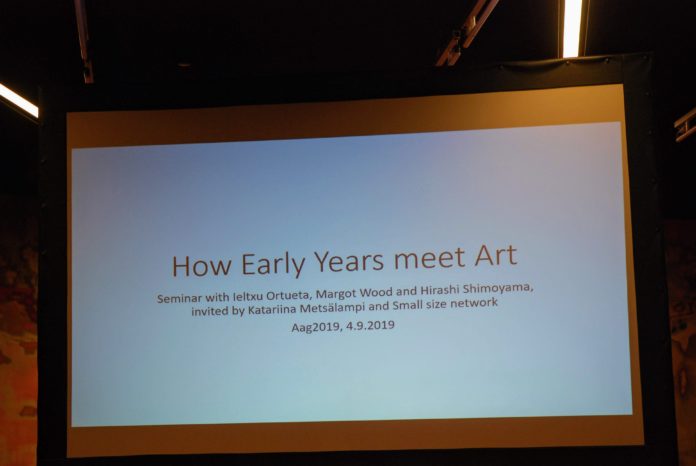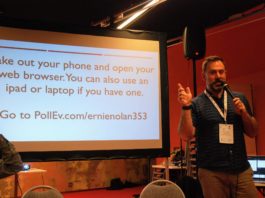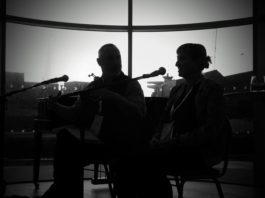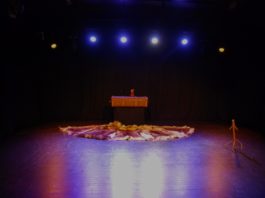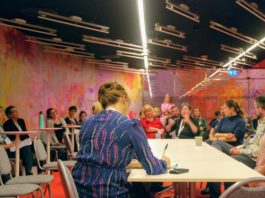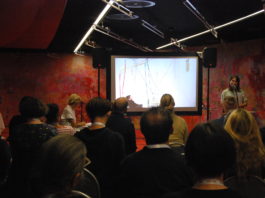Professionals from across the globe came together to discuss how Early Years Children encounter Art. This seminar was led by Ieltxu Ortueta (Brazil), Margot Wood (South Africa), and Hisashi Shimoyama (Japan). Each leader showed us a glimpse of how Early Years Children are introduced to the Arts in their respective countries.

“I believe we have some main strategies in place, the problem is in the execution (especially training),” said Margot Wood. Wood comes from South Africa and spoke about how the Arts are entirely integrated into public education for a child in South Africa. Coming from the States, the practice of having the Arts wholly funded and a part of the education system was baffling but exciting to me. Wood’s lecture was informative and hopeful. She ended by stating, “We need to ensure Arts experiences for the young.”

Ietlxu Ortueta, the creator of FLOU!, posed the question, “what is the difference between a child here, and a child there?” Ortueta wanted to give us some facts about Brazil as a whole, as well as the realities and foundations of ensuring Arts for Young People in the country. He discussed how we can change the narrative of working with the grants that are on offer and continue to push Arts opportunities for Young People. “What global characteristics inhabit Theatre for Young Audiences?”, he asked.

“Baby Theatre celebrates life” stated Hisashi Shimoyama. Baby Theatre in Japan didn’t get off the ground until about 10 years ago. Shimoyama explained that Arts for Early Years are still in their infancy in Asia. The change in family dynamics from multiple generations living together to children being brought up by just the parents has changed how Art is received by children. The Baby Theatre Project is run by the Theatre for Young Audiences Cooperative Union of Japan.
This seminar shed light on international programmes and techniques being used to ensure access to the Arts for the Early Years. Delegates were informed of various ways we can come together to work on this issue and were reminded of how our differences make us stronger.

